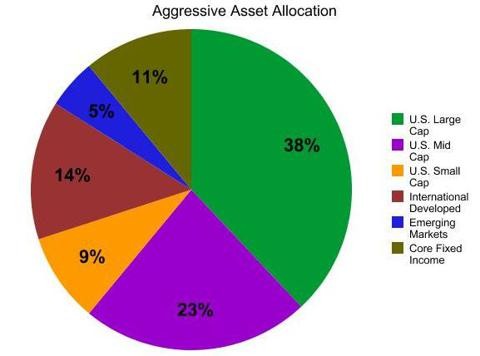Asset Allocation The 1
Post on: 7 Июль, 2015 No Comment

The 1/N Solution
Individual investors rarely employ sophisticated asset allocation methodologies, such as mean variance optimization, monte-carlo simulation, or probabalistic scenario analysis in formulating and implementing investment policy. Instead, they often employ naive strategies, such as equally dividing the pallete of asset classes. Such Couch potato or cowards portfolios are designated 1/N Heuristic portfolios by academia. Examples of 1/N Heuristic Portfolios, from simple to complex would take the following forms (assuming an equal 50/50 equity/fixed income division):
Two Asset Class 1/N Heuristic Portfolio
Vanguard Total Stock Market Index 50%
Vanguard Total Bond Market Index 50%
Four Asset Class 1/N Heuristic Portfolio
Vanguard Total Stock Market Index 16.7%
Vanguard Total International Index 16.7%
Vanguard REIT Index 16.7%
Vanguard Total Bond Market Index 50%
Six Asset Class 1/N Heuristic Portfolio
Vanguard Total Stock Market Index 10.0%
Vanguard Small Value Index 10.0%
Vanguard REIT Index 10.0%
Vanguard Total International Index 10.0%
Vanguard Total Bond Market Index 25.0%
Vanguard Inflation Protected Bond 25.0%
How do such naive asset allocation models stand up to academic analysis? Surprisingly well, as the following studies indicate.
Heath Windcliff and Phelim P. Boyle
ABSTRACT
This paper examines the so-called 1/n investment puzzle that has been observed in defined contribution plans whereby some participants divide their contributions equally among the available asset classes. It has been argued that this is a very naive strategy since it contradicts the fundamental tenets of modern portfolio theory. We use simple arguments to show that this behavior is perhaps less naive than it at first appears. It is well known that the optimal portfolio weights in a mean-variance setting are extremely sensitive to estimation errors, especially those in the expected returns. We show that when we account for estimation error, the 1/n rule has some advantages in terms of robustness; we demonstrate this with numerical experiments. This rule can provide a risk-averse investor with protection against very bad outcomes.
Huberman, Gur and Jiang, Wei, The 1/N Heuristic in 401(k) Plans (March 15, 2004). EFA 2004 Maastricht Meetings Paper No. 2036
Records of more than half a million participants in more than six hundred 401(k) pension plans indicate that participants tend to use a small number of funds: The number of participants using a given number of funds peaks at three funds and declines with the number of funds for more than three funds. Participants tend to allocate their contributions evenly across the funds they use, with the tendency weakening with the number of funds used. The median number of funds used is between three and four, and is not sensitive to the number of funds offered by the plans, which ranges from 4 to 59. A participant’s propensity to allocate contributions to equity funds is hardly sensitive to the fraction of equity funds among those offered by his plan. The paper also comments on limitations on inference available from experiments and from aggregate-level data analysis.
Shlomo Benartzi and Richard Thaler
There is a worldwide trend toward defined contribution saving plans and growing interest in privatized Social Security plans. In both environments, individuals are given some responsibility to make their own asset-allocation decisions, raising concerns about how well they do at this task. This paper investigates one aspect of the task, namely diversification. We show that some investors follow the 1/n strategy: they divide their contributions evenly across the funds offered in the plan Consistent with this naive notion of diversification, we find that the proportion invested in stocks depends strongly on the proportion of stock funds in the plan.
DeMiguel, Victor, Garlappi, Lorenzo and Uppal. Raman, How Inefficient are Simple Asset-Allocation Strategies? (February 2005).














